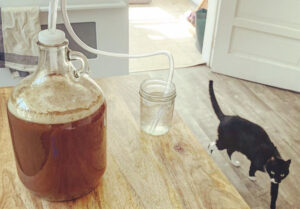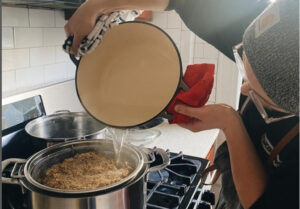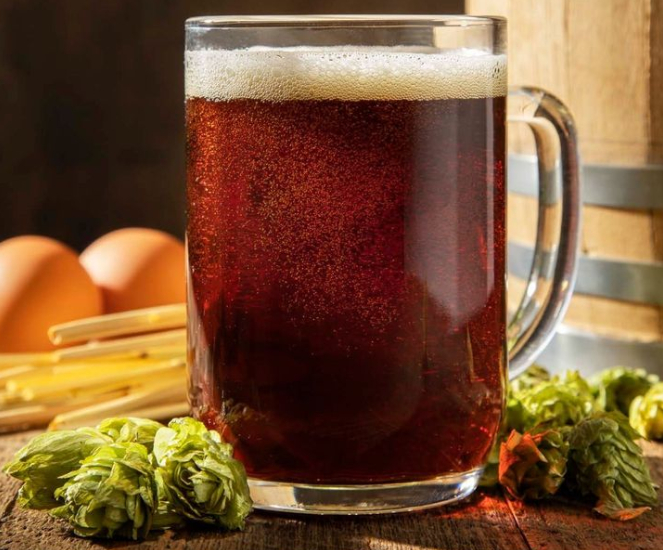The art of brewing has woven itself into the fabric of human culture for millennia. Among the numerous beverages that have emerged from this ancient tradition, ale stands out as a classic and beloved choice. From its humble origins to the modern craft movement, ale has evolved while preserving its essence. In this article, we’ll explore the history of ale, its distinct characteristics, and provide you with a generic recipe to embark on your own homebrewing journey.
A Glimpse into Ale’s Past
The history of ale dates back thousands of years to ancient civilizations. Historians believe that early forms of ale were brewed in Mesopotamia and Egypt around 4,000 BCE. These early brews were often made from malted barley, water, and wild yeasts, producing a fermented beverage that was likely cloudy, slightly sweet, and low in alcohol content.
As brewing techniques advanced, ale spread throughout Europe, taking on different characteristics based on local ingredients and methods. By the Middle Ages, ale had become a staple of daily life, and it was often safer to consume than water due to the brewing process that killed off harmful bacteria. Monasteries played a significant role in refining brewing techniques and contributed to the development of various ale styles.
What Sets Ale Apart
Ale is a type of beer that distinguishes itself through its fermentation process. Unlike lagers, which are fermented at cooler temperatures, ales are fermented at warmer temperatures using top-fermenting yeast strains. This process typically leads to a quicker fermentation and a shorter maturation period. As a result, ales often exhibit a more robust and complex flavour profile compared to lagers.
Ales encompass a wide range of styles, each with its unique characteristics. These styles include pale ales, brown ales, stouts, porters, and more. Ale styles can vary in terms of colour, bitterness, alcohol content, and flavour notes, offering a diverse array of options for beer enthusiasts to explore.
Embarking on Your Ale Brewing Adventure

Generic South African Ale Recipe (roughly 5 litres)
Ingredients:
- 1.5 kg pale malt extract
- 15 g bittering hops (e.g., Cascade)
- 30g Southern Passion Hops
- 4 litres water (plus additional for boiling)
- Priming sugar (for bottling)
- Ale yeast
- 5ml Irish Moss (Optional for those who want a clear beer)
Equipment:
- Large pot (at least 12 litres)
- Fermentation vessel (6-litre capacity or more)
- Airlock
- Bottles with caps
- Thermometer
- Hydrometer (for measuring specific gravity)
- Sanitizing solution
Instructions:

- Sanitize: Ensure all equipment is thoroughly cleaned and sanitized to prevent contamination.
- Boil: In the large pot, bring 4 litres of water to a boil. Add the pale malt extract and the bittering hops. Boil for 30 minutes.
- Flavour and Aroma: Add the flavour hops and boil for an additional 10 minutes. In the last 2 minutes, add the aroma hops.
- Cool and Transfer: Remove the pot from heat and cool the wort quickly using a cold-water bath or wort chiller. Transfer the cooled wort to the fermentation vessel.
- Pitch Yeast: Once the wort has reached a suitable temperature (as per yeast instructions), pitch the ale yeast into the fermentation vessel.
- Ferment: Seal the fermentation vessel with an airlock and let it ferment at the recommended temperature for your chosen yeast strain. This typically takes about 1-2 weeks.
- Bottle: After fermentation is complete, dissolve priming sugar in a small amount of hot water and add it to the wort. Carefully transfer the ale into sanitized bottles, leaving some space at the top. Cap the bottles.
- Carbonation: Place the capped bottles in a dark, cool place for about 2 weeks to allow carbonation to develop.
- Enjoy: Once carbonated, chill the ale and pour it into a glass to enjoy the fruits of your labour.
Remember, the above recipe is just a starting point. Feel free to experiment with different hops, malt extracts, and yeast strains to create your unique ale flavor.
Crafting Tradition in Your Own Kitchen
Homebrewing ale is a tribute to centuries of brewing history, a homage to the pioneers who crafted this delightful beverage. As you delve into the world of homebrewing, you’ll not only gain an appreciation for the science and art of brewing but also develop a deeper connection to the rich heritage of ale. So, gather your ingredients, follow the steps, and raise a glass to the ancient tradition of ale brewing – a tradition now alive and thriving in the comfort of your own home.


